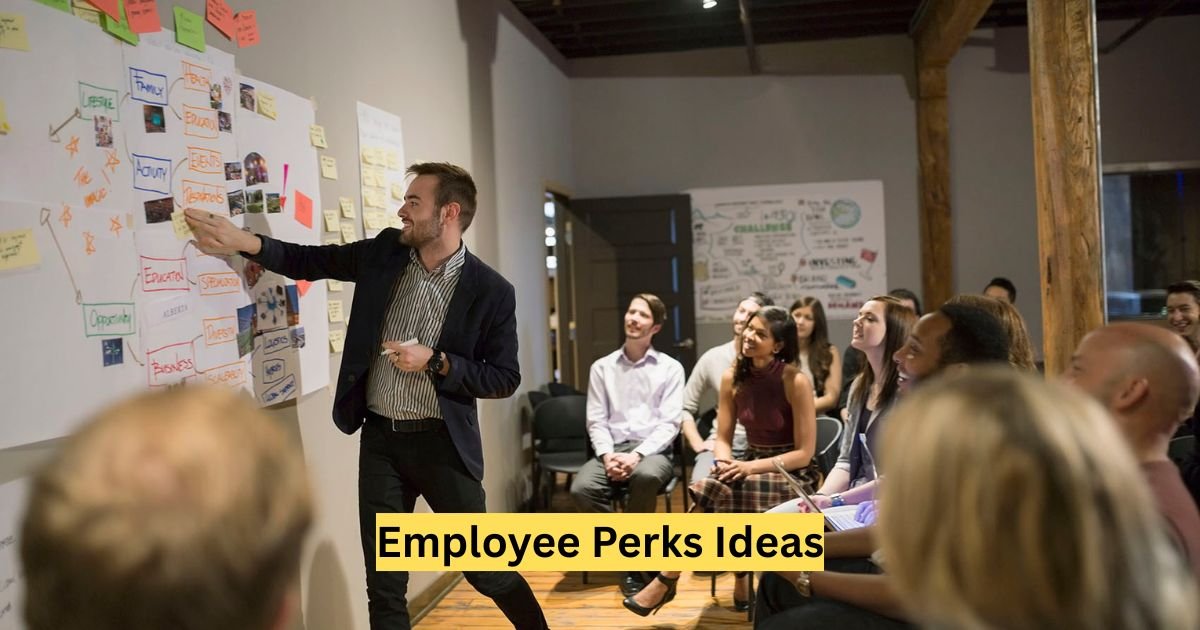In today’s competitive job market, offering unique and meaningful employee perks is essential for attracting top talent and fostering a positive workplace culture. Beyond a competitive salary, perks can significantly enhance employee satisfaction, retention, and productivity. According to a 2023 Glassdoor survey, 63% of employees consider benefits and perks a major factor when accepting a job offer. So, what are the best employee perks ideas to keep your team motivated and engaged? This article explores creative, practical, and data-backed perk ideas to elevate your company’s appeal.
Why Employee Perks Matter in 2025
Employee perks are more than just “nice-to-haves.” They reflect a company’s commitment to its workforce’s well-being and professional growth. With remote and hybrid work models becoming standard, perks have evolved to meet diverse employee needs. A 2024 SHRM report found that organizations offering comprehensive benefits saw a 20% reduction in turnover rates. Perks also boost morale, improve mental health, and create a sense of belonging.
But not all perks are created equal. The key is to offer benefits that resonate with your team’s unique needs and preferences. Let’s dive into some innovative employee perks ideas that can transform your workplace.
Top Employee Perks Ideas for a Modern Workforce
1. Flexible Work Arrangements
Why it works: Flexibility is a top priority for employees today. A 2024 Gallup study revealed that 54% of workers would leave their job for one offering more flexible hours or remote work options.
How to implement it:
-
Offer hybrid or fully remote work options.
-
Allow employees to set their own hours within a defined framework.
-
Provide tools like Slack or Asana to support seamless collaboration.
Real-world example: Buffer, a fully remote company, offers its employees a “work from anywhere” policy, leading to a 90% employee satisfaction rate.
Pro tip: Conduct regular surveys to understand your team’s preferred work arrangements and adjust policies accordingly.
2. Wellness Programs and Mental Health Support
Why it works: Mental health is a growing concern, with 76% of employees reporting burnout symptoms in a 2023 Mental Health America survey. Wellness perks show employees you care about their holistic well-being.
How to implement it:
-
Offer free or subsidized gym memberships.
-
Provide access to mental health apps like Headspace or Calm.
-
Host mindfulness workshops or yoga sessions.
Real-world example: Google provides on-site wellness centers and free counseling services, contributing to its high employee retention rates.
Pro tip: Partner with local wellness providers to offer discounted services tailored to your team’s needs.
3. Professional Development Opportunities
Why it works: Employees value growth opportunities. A LinkedIn Learning report found that 94% of employees would stay longer at a company that invests in their career development.
How to implement it:
-
Offer tuition reimbursement for relevant courses.
-
Provide access to platforms like Coursera or Udemy.
-
Host in-house training sessions or bring in industry experts.
Real-world example: Salesforce offers employees a $5,000 annual learning stipend, empowering them to pursue certifications and skills.
Pro tip: Create a mentorship program to pair employees with senior leaders for personalized growth.
4. Financial Wellness Benefits
Why it works: Financial stress impacts 65% of employees, according to a 2024 PwC survey. Perks that alleviate financial burdens can boost productivity and loyalty.
How to implement it:
-
Offer student loan repayment assistance.
-
Provide financial planning workshops or access to advisors.
-
Introduce 401(k) matching or stock options.
Real-world example: Starbucks offers a “Future Roast” 401(k) plan with generous matching, helping employees save for retirement.
Pro tip: Tailor financial perks to your workforce’s demographics, such as offering childcare subsidies for parents.
5. Unique and Creative Perks
Why it works: Standout perks make your company memorable. They can also reflect your brand’s culture and values.
How to implement it:
-
Provide pet-friendly offices or pet insurance discounts.
-
Offer “duvet days” (unscheduled mental health days).
-
Host team-building events like escape rooms or cooking classes.
Real-world example: Airbnb gives employees a $2,000 annual travel stipend to explore its listings, reinforcing its travel-focused mission.
Pro tip: Align creative perks with your company’s identity to make them authentic and impactful.
How to Choose the Right Perks for Your Team
Selecting the best employee perks requires understanding your workforce’s needs. Here’s a step-by-step guide to get it right:
-
Survey Your Employees: Use anonymous surveys to gather insights on desired benefits.
-
Analyze Demographics: Consider age, family status, and career stage when designing perks.
-
Balance Cost and Impact: High-cost perks like sabbaticals may not suit small businesses, but low-cost options like flexible hours can be just as effective.
-
Pilot and Iterate: Test new perks on a small scale and refine based on feedback.
Pro tip: Regularly review your perks package to ensure it aligns with industry trends and employee expectations.
Common Questions About Employee Perks
What Are the Most Cost-Effective Employee Perks?
Cost-effective perks include flexible work schedules, recognition programs, and virtual wellness resources. For example, offering a “work-from-home Wednesday” requires minimal investment but boosts morale.
How Do Perks Improve Employee Retention?
Perks improve retention by addressing employees’ personal and professional needs, fostering loyalty. A 2023 Deloitte study found that companies with robust benefits programs had 30% lower voluntary turnover.
Can Small Businesses Afford Employee Perks?
Yes! Small businesses can offer low-cost perks like extra vacation days, team lunches, or remote work options. These small gestures can have a big impact on employee satisfaction.
The Impact of Perks on Company Culture
Employee perks go beyond individual benefits—they shape your company’s culture. A thoughtful perks program signals that you value your team, which can lead to:
-
Increased Productivity: Happy employees are 12% more productive, according to a University of Warwick study.
-
Stronger Employer Branding: Unique perks make your company stand out on platforms like Glassdoor.
-
Better Collaboration: Team-focused perks, like group outings, foster camaraderie.
Real-world example: Zappos is known for its quirky perks, like free vending machine snacks and “culture camps,” which contribute to its 85% employee retention rate.
Key Considerations for Implementing Perks
Before rolling out new perks, keep these factors in mind:
-
Equity and Inclusion: Ensure perks are accessible to all employees, regardless of role or location.
-
Communication: Clearly communicate available perks through onboarding and regular updates.
-
Measurement: Track the impact of perks on engagement and retention using HR analytics tools.
Pro tip: Use employee feedback to refine your perks program and avoid wasting resources on unpopular benefits.
Table: Top Employee Perks and Their Benefits
|
Perk |
Description |
Benefits |
Keywords |
|---|---|---|---|
|
Flexible Work Arrangements |
Allows employees to choose work hours or locations (remote/hybrid). |
Boosts work-life balance, reduces burnout. |
Flexible work, remote work benefits |
|
Wellness Programs |
Includes gym memberships, mental health apps, or mindfulness workshops. |
Improves mental health, reduces stress. |
Employee wellness, mental health support |
|
Professional Development |
Offers training, certifications, or mentorship programs. |
Enhances skills, increases retention. |
Career growth, learning opportunities |
|
Financial Wellness Benefits |
Provides loan repayment, financial planning, or retirement matching. |
Reduces financial stress, builds loyalty. |
Financial wellness, employee benefits |
|
Creative Perks |
Unique benefits like pet insurance, travel stipends, or duvet days. |
Reflects company culture, attracts talent. |
Unique employee perks, company culture |
LSI Keywords: workplace benefits, employee satisfaction, retention strategies, modern perks, team morale.
See Also: top10ideas.org
Conclusion
Employee perks are a powerful tool for creating a thriving, engaged workforce. From flexible work arrangements to creative benefits like travel stipends, the right perks can transform your company’s culture and attract top talent. By listening to your employees’ needs and staying attuned to industry trends, you can design a perks program that drives satisfaction and loyalty.




